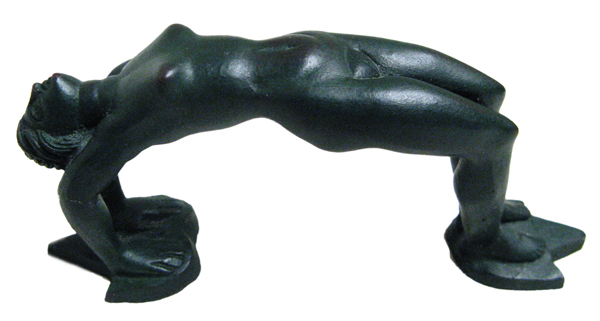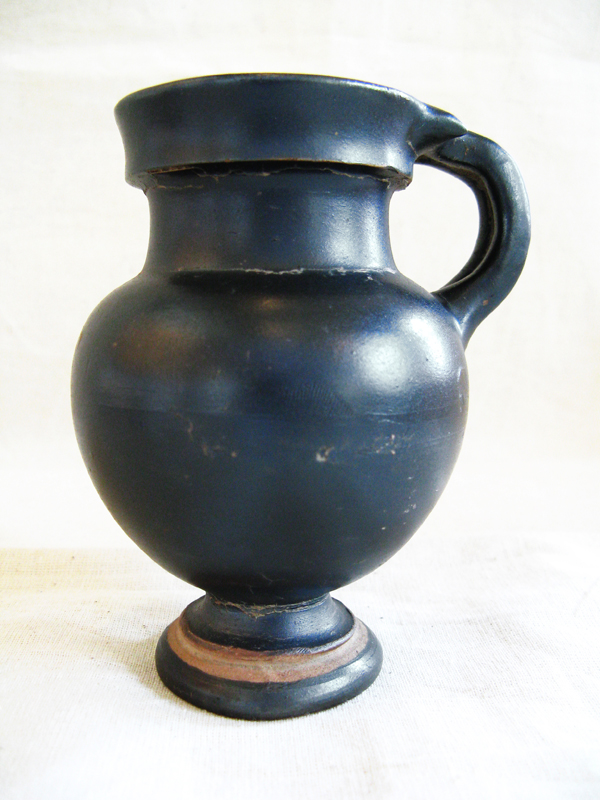The ancestors of the Etruscans were indigenous peoples living in central Italy during the Bronze Age. During the Iron Age, urban civilization spread throughout Etruria--Tarquinia was likely the oldest city and is the most famous. At the height of their power, the Etruscans dominated Italy from the Po River in the north to central Campania, but by the end of the third century BC, all of Etruria had fallen into Roman hands.
Etruscan art appears nowhere in the world outside of the Italian peninsula. It is founded upon the concepts, methods and progress of Greek art; early Etruscan art parallels Archaic Greek art in style. By the fifth and fourth centuries, Etruscan naturalistic forms begin to reflect the ideals of Greek Classical and Hellenistic art. Yet Etruscan art is not wholly Greek. Etruscan artists favored terracotta sculpture (including unique couples reclining atop sarcophagi), metalwork, particularly cast bronze, and frescoes.
Sculpture

Girl Acrobat
Etruscan
replica: from the British Museum, London
date of the original: c. 3rd to 2nd century BC
provenance of the original: now in the British Museum, London
description: Female figure in a back-bend position. Resin replica with dark green finish; bronze original. Height 6.5 cm, length 14.5 cm, depth 4 cm.
Etruscan works of art were greatly inspired by Greek models and were sometimes the creation of imported Greek craftsmen, though the Etruscans were themselves clever workmen.
This figure once formed the handle of a bronze box of the type called cistae which were placed in tombs and contained small offerings, usually toiletries.
(See also: Girl Athlete.)

Girl Athlete
Etruscan
replica: from the British Museum, London
date of the original: c. 330-300 BC
provenance of the original: at Palestrina, in the sarcophagus of a woman; now in the British Museum, London
description: Small female figure holding a strigil in left hand with right hand raised and shielding the eyes. Resin with dark green oxidized finish; bronze original. On base: height 25.5 cm, width 7 cm, depth 4 cm.
The original forms the handle of a large and decorative strigil, an instrument used to scrape dust, oil, and sweat from the skin after exercise. The girl herself holds a strigil in her left hand and with her right either shades her eyes or puts the victory crown on her head.
(See also: Girl Acrobat.)
Pottery

Teano-Ware Cup
Etruscan
original
gift of: Professor T. Lacalli
date: c. 400-300 BC
provenance: purchased by donor in 1970.
description: Clay thistle-shaped vessel with large mouth and handle; gunmetal slip. Height 10.5 cm, diameter 7.5 cm.
The style of this cup may be due partly to influences from the Greeks living in southern Italy, who carried on the arts of pottery from their homeland. This can been seen in the deep black finish given to the cup.
Little is known about the specific characteristics and style of Teano-ware pottery, but it probably gets its name from the city of Teano, Italy where it was likely produced.